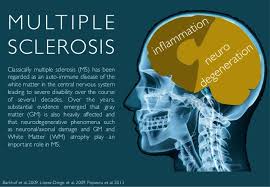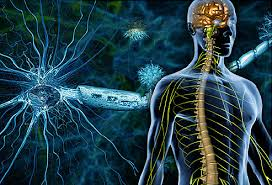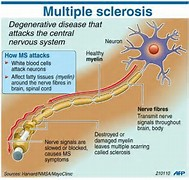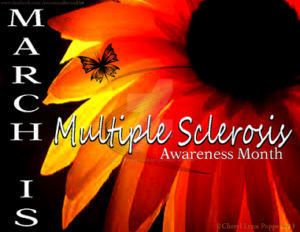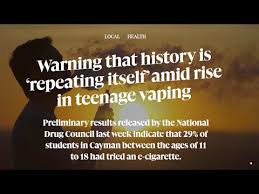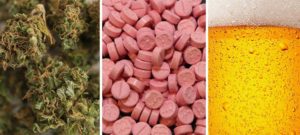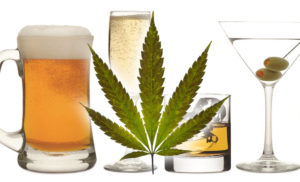
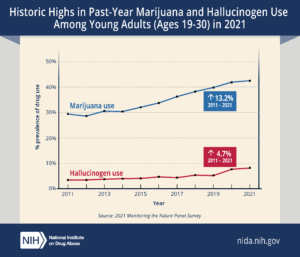
Overall Addiction let’s us overview first:
Drug addiction, also called substance use disorder, is a disease that affects a person’s brain and behavior and leads to an inability to control the use of a legal or illegal drug or medicine. Substances such as alcohol, marijuana and nicotine also are considered drugs. When you’re addicted, you may continue using the drug despite the harm it causes.
Drug addiction can start with experimental use of a recreational drug in social situations, and, for some people, the drug use becomes more frequent. For others, particularly with opioids, drug addiction begins when they take prescribed medicines or receive them from others who have prescriptions.
The risk of addiction and how fast you become addicted varies by drug. Some drugs, such as opioid painkillers, have a higher risk and cause addiction more quickly than others.
As time passes, you may need larger doses of the drug to get high. Soon you may need the drug just to feel good. As your drug use increases, you may find that it’s increasingly difficult to go without the drug. Attempts to stop drug use may cause intense cravings and make you feel physically ill. These are called withdrawal symptoms.
Help from your health care provider, family, friends, support groups or an organized treatment program can help you overcome your drug addiction and stay drug-free.
Know the signs of addiction:
Drug addiction symptoms or behaviors include, among others:
- Feeling that you have to use the drug regularly — daily or even several times a day
- Having intense urges for the drug that block out any other thoughts
- Over time, needing more of the drug to get the same effect
- Taking larger amounts of the drug over a longer period of time than you intended
- Making certain that you maintain a supply of the drug
- Spending money on the drug, even though you can’t afford it
- Not meeting obligations and work responsibilities, or cutting back on social or recreational activities because of drug use
- Continuing to use the drug, even though you know it’s causing problems in your life or causing you physical or psychological harm
- Doing things to get the drug that you normally wouldn’t do, such as stealing
- Driving or doing other risky activities when you’re under the influence of the drug
- Spending a good deal of time getting the drug, using the drug or recovering from the effects of the drug
- Failing in your attempts to stop using the drug
- Experiencing withdrawal symptoms when you attempt to stop taking the drug
Recognizing unhealthy drug use in family members
Sometimes it’s difficult to distinguish normal teenage moodiness or anxiety from signs of drug use. Possible signs that your teenager or other family member is using drugs include:
- Problems at school or work — frequently missing school or work, a sudden disinterest in school activities or work, or a drop in grades or work performance
- Physical health issues — lack of energy and motivation, weight loss or gain, or red eyes
- Neglected appearance — lack of interest in clothing, grooming or looks
- Changes in behavior — major efforts to bar family members from entering the teenager’s room or being secretive about going out with friends; or drastic changes in behavior and in relationships with family and friends
- Money issues — sudden requests for money without a reasonable explanation; or your discovery that money is missing or has been stolen or that items have disappeared from your home, indicating maybe they’re being sold to support drug use.
Alcohol Addiction:
People who drink are affected even before they show signs of being drunk, especially when it comes to decision-making abilities.
At first, alcohol causes people to feel upbeat and excited. But this is temporary and they shouldn’t be fooled.
If drinking continues, the effects on the body—and the potential risks—multiply. Here’s what can happen:
- Inhibitions and memory: People may say and do things that they will regret later, or possibly not remember at all. Inhibitions are lost – leading to poor decision making.
- Decision-making skills: When they drink, individuals are more likely to be impulsive. They may be at greater risk for having an alcohol-related traffic crash, getting into fights, or making unwise decisions about sex.
- Coordination and physical control: When drinking leads to loss of balance, slurred speech, and blurred vision, even normal activities can become more dangerous.
- Death: Drinking too much alcohol can also lead to death. If people drink too much, they will eventually get sleepy and pass out. Reflexes like gagging and breathing can be suppressed. That means they could vomit and choke, or stop breathing completely.
And finally, it’s easy to misjudge how long alcohol’s effects last. Alcohol continues to affect the brain and body long after the last drink has been finished. Even after someone stops drinking, alcohol in the stomach and intestine continues to enter the bloodstream, impairing judgment and coordination for hours.
An alcohol blackout is a gap in a person’s memory for events that took place while he or she was drinking. When a blackout happens, a person’s brain does not create memories for these events as they are happening. For people who have had a blackout, it can be frightening to wake up the next day and not remember what they did the night before.
Teens drink for a variety of reasons. Some teens want to experience new things. Others feel pressured into drinking by peers. And some are looking for a way to cope with stress or other problems. Unfortunately, drinking will only make any problems a person has already worse, not better.
Symptoms
Alcohol is a drug! Alcohol use disorder can be mild, moderate or severe, based on the number of symptoms you experience. Signs and symptoms may include:
- Being unable to limit the amount of alcohol you drink
- Wanting to cut down on how much you drink or making unsuccessful attempts to do so
- Spending a lot of time drinking, getting alcohol or recovering from alcohol use
- Feeling a strong craving or urge to drink alcohol
- Failing to fulfill major obligations at work, school or home due to repeated alcohol use
- Continuing to drink alcohol even though you know it’s causing physical, social, work or relationship problems
- Giving up or reducing social and work activities and hobbies to use alcohol
- Using alcohol in situations where it’s not safe, such as when driving or swimming
- Developing a tolerance to alcohol so you need more to feel its effect or you have a reduced effect from the same amount
- Experiencing withdrawal symptoms — such as nausea, sweating and shaking — when you don’t drink, or drinking to avoid these symptoms
Clinical Symptoms of alcohol poisoning include:
- Confusion
- Difficulty remaining conscious
- Vomiting
- Seizures
- Trouble with breathing
- Slow heart rate
- Clammy skin
- Dulled responses, such as no gag reflex (which prevents choking)
- Extremely low body temperature
- Death.
Alcohol use disorder can include periods of being drunk (alcohol intoxication) and symptoms of withdrawal.
- Alcohol intoxication results as the amount of alcohol in your bloodstream increases. The higher the blood alcohol concentration is, the more likely you are to have bad effects. Alcohol intoxication causes behavior problems and mental changes. These may include inappropriate behavior, unstable moods, poor judgment, slurred speech, problems with attention or memory, and poor coordination. You can also have periods called “blackouts,” where you don’t remember events. Very high blood alcohol levels can lead to coma, permanent brain damage or even death.
- Alcohol withdrawal can occur when alcohol use has been heavy and prolonged and is then stopped or greatly reduced. It can occur within several hours to 4 to 5 days later. Signs and symptoms include sweating, rapid heartbeat, hand tremors, problems sleeping, nausea and vomiting, hallucinations, restlessness and agitation, anxiety, and occasionally seizures. Symptoms can be severe enough to impair your ability to function at work or in social situations.
When to see a doctor:
If you feel that you sometimes drink too much alcohol, or your drinking is causing problems, or if your family is concerned about your drinking, talk with your health care provider. Other ways to get help include talking with a mental health professional or seeking help from a support group such as Alcoholics Anonymous or a similar type of self-help group.
Because denial is common, you may feel like you don’t have a problem with drinking. You might not recognize how much you drink or how many problems in your life are related to alcohol use. Listen to relatives, friends or co-workers when they ask you to examine your drinking habits or to seek help. Consider talking with someone who has had a problem with drinking but has stopped.
Causes:
Genetic, psychological, social and environmental factors can impact how drinking alcohol affects your body and behavior. Theories suggest that for certain people drinking has a different and stronger impact that can lead to alcohol use disorder.
Over time, drinking too much alcohol may change the normal function of the areas of your brain associated with the experience of pleasure, judgment and the ability to exercise control over your behavior. This may result in craving alcohol to try to restore good feelings or reduce negative ones.
Risk factors:
Alcohol use may begin in the teens, but alcohol use disorder occurs more frequently in the 20s and 30s, though it can start at any age.
Risk factors for alcohol use disorder include:
- Steady drinking over time. Drinking too much on a regular basis for an extended period or binge drinking on a regular basis can lead to alcohol-related problems or alcohol use disorder.
- Starting at an early age. People who begin drinking — especially binge drinking — at an early age are at a higher risk of alcohol use disorder.
- Family history. The risk of alcohol use disorder is higher for people who have a parent or other close relative who has problems with alcohol. This may be influenced by genetic factors.
- Depression and other mental health problems. It’s common for people with a mental health disorder such as anxiety, depression, schizophrenia or bipolar disorder to have problems with alcohol or other substances.
- History of trauma. People with a history of emotional trauma or other trauma are at increased risk of alcohol use disorder.
- Having bariatric surgery. Some research studies indicate that having bariatric surgery may increase the risk of developing alcohol use disorder or of relapsing after recovering from alcohol use disorder.
- Social and cultural factors. Having friends or a close partner who drinks regularly could increase your risk of alcohol use disorder. The glamorous way that drinking is sometimes portrayed in the media also may send the message that it’s OK to drink too much. For young people, the influence of parents, peers and other role models can impact risk.
Complications:
Alcohol depresses your central nervous system. In some people, the initial reaction may feel like an increase in energy. But as you continue to drink, you become drowsy and have less control over your actions.
Too much alcohol affects your speech, muscle coordination and vital centers of your brain. A heavy drinking binge may even cause a life-threatening coma or death. This is of particular concern when you’re taking certain medications that also depress the brain’s function.
Excessive drinking can reduce your judgment skills and lower inhibitions, leading to poor choices and dangerous situations or behaviors.
Health Problems That can Arise:
- Liver disease. Heavy drinking can cause increased fat in the liver (hepatic steatosis) and inflammation of the liver (alcoholic hepatitis). Over time, heavy drinking can cause irreversible destruction and scarring of liver tissue (cirrhosis).
- Digestive problems. Heavy drinking can result in inflammation of the stomach lining (gastritis), as well as stomach and esophageal ulcers. It can also interfere with your body’s ability to get enough B vitamins and other nutrients. Heavy drinking can damage your pancreas or lead to inflammation of the pancreas (pancreatitis).
- Heart problems. Excessive drinking can lead to high blood pressure and increases your risk of an enlarged heart, heart failure or stroke. Even a single binge can cause serious irregular heartbeats (arrhythmia) called atrial fibrillation.
- Diabetes complications. Alcohol interferes with the release of glucose from your liver and can increase the risk of low blood sugar (hypoglycemia). This is dangerous if you have diabetes and are already taking insulin or some other diabetes medications to lower your blood sugar level.
- Issues with sexual function and periods. Heavy drinking can cause men to have difficulty maintaining an erection (erectile dysfunction). In women, heavy drinking can interrupt menstrual periods.
- Eye problems. Over time, heavy drinking can cause involuntary rapid eye movement (nystagmus) as well as weakness and paralysis of your eye muscles due to a deficiency of vitamin B-1 (thiamin). A thiamin deficiency can result in other brain changes, such as irreversible dementia, if not promptly treated.
- Birth defects. Alcohol use during pregnancy may cause miscarriage. It may also cause fetal alcohol spectrum disorders (FASDs). FASDs can cause a child to be born with physical and developmental problems that last a lifetime.
- Bone damage. Alcohol may interfere with making new bone. Bone loss can lead to thinning bones (osteoporosis) and an increased risk of fractures. Alcohol can also damage bone marrow, which makes blood cells. This can cause a low platelet count, which may result in bruising and bleeding.
- Neurological complications. Excessive drinking can affect your nervous system, causing numbness and pain in your hands and feet, disordered thinking, dementia, and short-term memory loss.
- Weakened immune system. Excessive alcohol use can make it harder for your body to resist disease, increasing your risk of various illnesses, especially pneumonia.
- Increased risk of cancer. Long-term, excessive alcohol use has been linked to a higher risk of many cancers, including mouth, throat, liver, esophagus, colon and breast cancers. Even moderate drinking can increase the risk of breast cancer.
- Medication and alcohol interactions. Some medications interact with alcohol, increasing its toxic effects. Drinking while taking these medications can either increase or decrease their effectiveness, or make them dangerous.
Alcohol poisoning (also called alcohol overdose) occurs when there is so much alcohol in a person’s bloodstream that areas of the brain controlling basic life-support systems—such as breathing, heart rate, and temperature control—begin to shut down.
If you suspect someone has alcohol poisoning, call 911 and get medical help immediately. Cold showers, hot coffee, or walking will NOT reverse the effects of alcohol overdose and could actually make things worse.
Marijuana, hashish & other cannabis-containing substances:
People use cannabis by smoking, eating or inhaling a vaporized form of the drug. Cannabis often precedes or is used along with other substances, such as alcohol or illegal drugs, and is often the first drug tried.
Signs and symptoms of recent use can include:
- A sense of euphoria or feeling “high”
- A heightened sense of visual, auditory and taste perception
- Increased blood pressure and heart rate
- Red eyes
- Dry mouth
- Decreased coordination
- Difficulty concentrating or remembering
- Slowed reaction time
- Anxiety or paranoid thinking
- Cannabis odor on clothes or yellow fingertips
- Major cravings for certain foods at unusual times
Long-term use is often associated with:
- Decreased mental sharpness
- Poor performance at school or at work
- Ongoing cough and frequent lung infections
Barbiturates, benzodiazepines and hypnotics:
Barbiturates, benzodiazepines and hypnotics are prescription central nervous system depressants. They’re often used and misused in search for a sense of relaxation or a desire to “switch off” or forget stress-related thoughts or feelings.
- Barbiturates. An example is phenobarbital.
- Benzodiazepines. Examples include sedatives, such as diazepam (Valium), alprazolam (Xanax), lorazepam (Ativan), clonazepam (Klonopin) and chlordiazepoxide (Librium).
- Hypnotics. Examples include prescription sleeping medicines such as zolpidem (Ambien) and zaleplon (Sonata).
Signs and symptoms of recent use can include:
- Drowsiness
- Slurred speech
- Lack of coordination
- Irritability or changes in mood
- Problems concentrating or thinking clearly
- Memory problems
- Involuntary eye movements
- Lack of inhibition
- Slowed breathing and reduced blood pressure
- Falls or accidents
- Dizziness
Complications to the body with these legal and illegal medications:
- Taking part in risky behaviors such as drink driving or unprotected sex
- Changes in behavior such as mood swings or increased aggression toward others
- Impacts on sleep or experiencing insomnia
- Cognitive/memory problems
- Reduced appetite or not eating a balanced diet
- Regular colds and flu
- Long term health impacts such as liver, kidney and heart problems or cancer (depending on the type of drug used and how frequently it was used)
